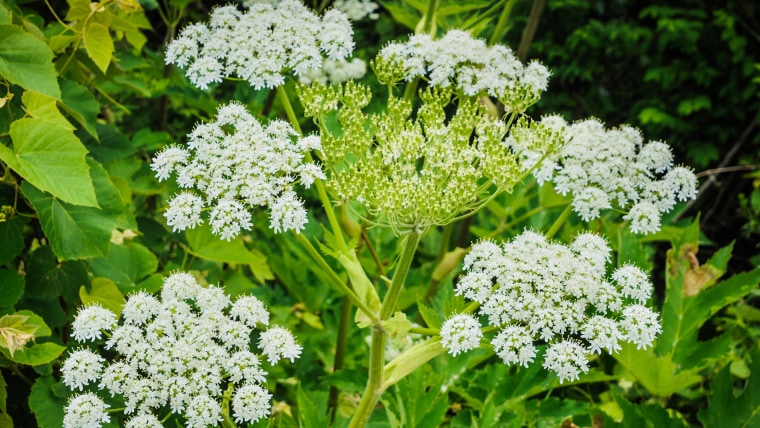A mighty weed with a pretty flower but a toxic sap that can cause burns and even blindness has been spreading across the nation’s northeast.
The giant hogweed, which has plagued New York for years, recently appeared in Virginia, where one agricultural expert with Virginia Tech wrangled it outside a residential home wearing a Tyvek suit and goggles.
“Giant Hogweed makes Poison Ivy look like a walk in the park," according to a warning on the Facebook page for Virginia’s Isle of Wight County. "Contact with this plant, combine with exposure to the sun, can produce 3rd degree burns and permanent blindness.”
The weed has been spotted throughout the state by transportation and agricultural officials.
The plant can grow anywhere between 8 to 15 feet tall when flowering. When in bloom, its white flowers cluster into a flat umbrella shape.
The plant’s hollow, rigid stem, which is covered in purple splotches and thick, white hairs, contains a toxic sap than could splatter when cut. The plant should either be pulled up using protective clothing or destroyed by use of herbicides, experts said.
The invasive weed originally came from Southwest Asia and was discovered several years ago in New York, which has been fighting it off ever since.

New York's Department of Environmental Conservation warned that touching the giant hogweed's sap prevents the skin from protecting itself from sunlight, leading to severe sunburn. Heat and sweat can worsen the reaction.
"Burns can occur from normal exposure to sun,” Virginia's Isle of Wight County warned. “Symptoms include painful blisters, which become darkly pigmented and can cause scars. Your skin can remain sensitive to sunlight for many years after exposure as well. And, if the sap gets in your eyes, there is the potential for blindness.”